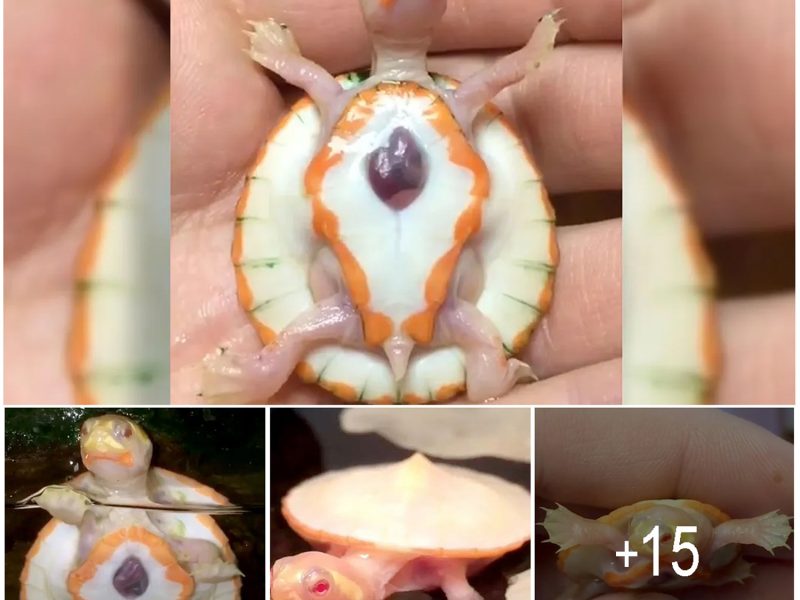The Asian or Indian paradise-flycatcher bird is a medium-sized bird that belongs to the paradise flycatcher family. These birds belong to the Monarchidae family, which consists of passerine birds that can be found all across the world. The Indian paradise-flycatcher (Terpsiphone paradisi) is one of the most beautiful birds in the world thanks to its unique tail feathers in the males that gives them a long tail. This species has a wide range of habitats. These birds are migratory in nature and spend a large chunk of their life in regions like China, Sri Lanka, Myanmar, Pakistan, and Kazakhstan breeding, thanks to which their population across Asia is at a stable rate.
The males of this bird species are the focus of avid bird watchers because of their beautiful long tail that brings out their beauty. Here is to hoping these beautiful birds stay around for as long as possible with no threat of extinction or endangerment.
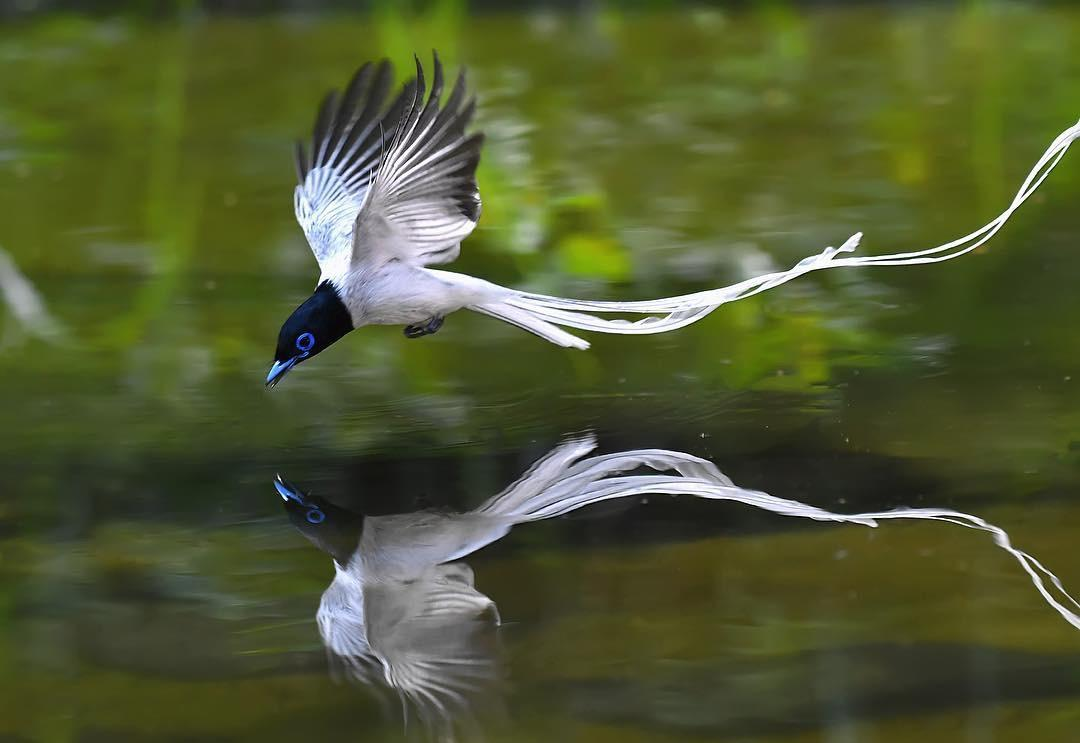
Indian Paradise-Flycatcher Interesting Facts
What Type Of Animal Is An Indian Paradise-Flycatcher?
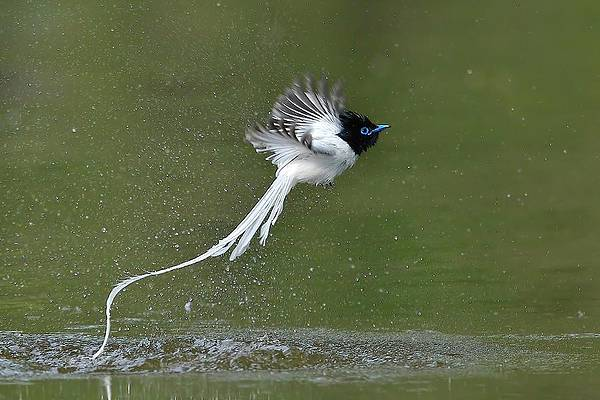
The Indian paradise-flycatcher (Terpsiphone paradisi), also known as the Asian paradise-flycatcher, is a medium-sized bird endemic to Asia, mainly India.
What Class Of Animal Does An Indian Paradise-Flycatcher Belong To?
The Indian paradise-flycatcher (Terpsiphone paradisi) or the Asian paradise-flycatcher belongs to the Aves class of animals. The Aves class consists solely of birds.
How Many Indian Paradise-Flycatchers Are There In The World?
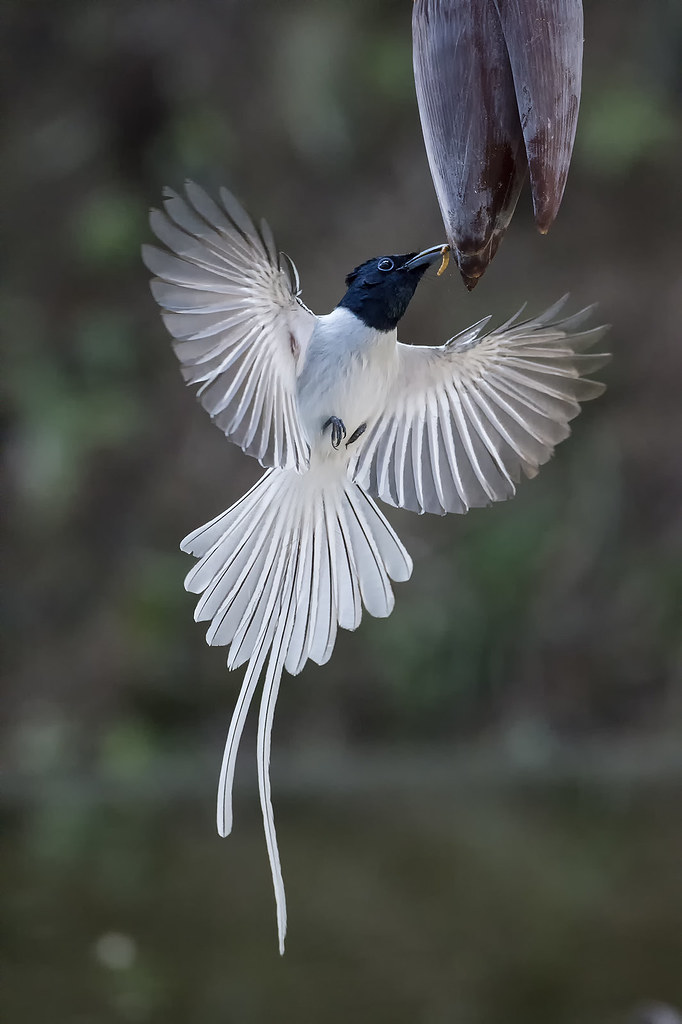
Due to a lack of data, the exact population size of these rufous birds is not known. However, the population distribution of these birds has been found in most parts of north and central India, north to south-eastern China, north Pakistan, and north Nepal, along with a breeding population in southern India and Sri Lanka. They occur in this range naturally or as a result of migration during the breeding season leading to an estimated stable population across Asia.
Where Does An Indian Paradise-Flycatcher Live?
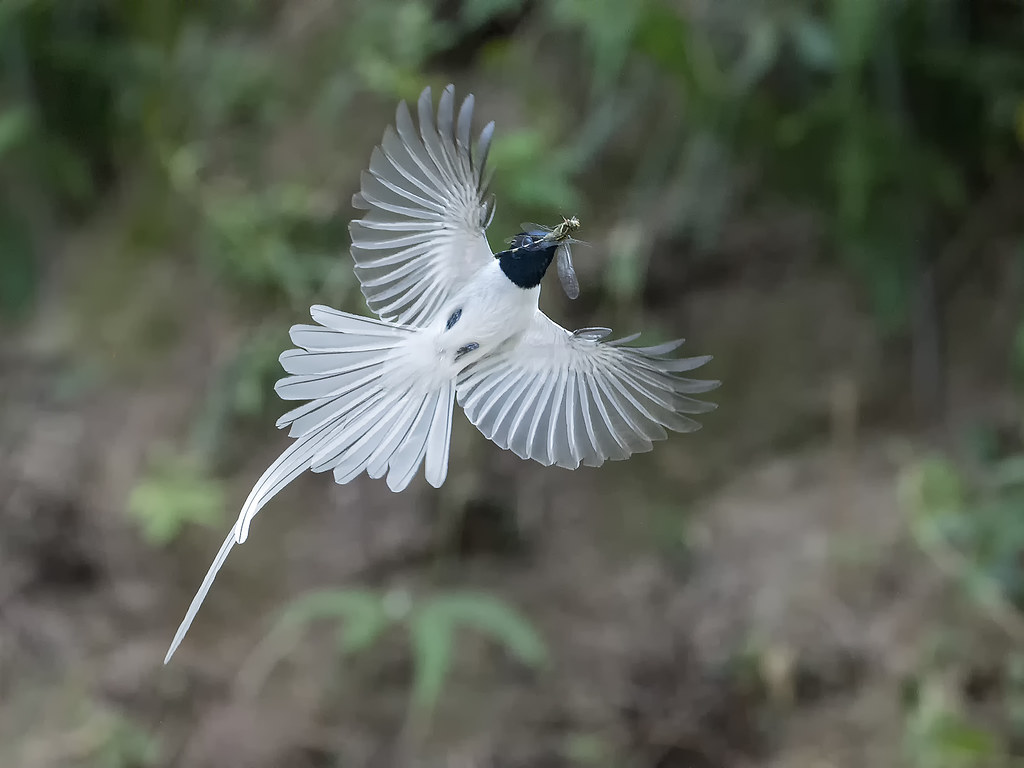
The Indian or Asian paradise-flycatcher (Terpsiphone paradisi) species, due to its large habitat range, can be found in temperate regions with a tropical climate. Since these birds are migratory in nature, they often migrate to a new habitat during the breeding season. This is generally an oriental habitat range. The Indian-paradise flycatcher range map is diverse, and the population distribution of these birds can be found in parts of Kazakhstan, India, central and north China, Pakistan, and Sri Lanka. During the breeding season, the Asian paradise-flycatcher shows migratory behavior and flies to the southern range of the Himalayas.
What Is An Indian Paradise-Flycatcher’s Habitat?
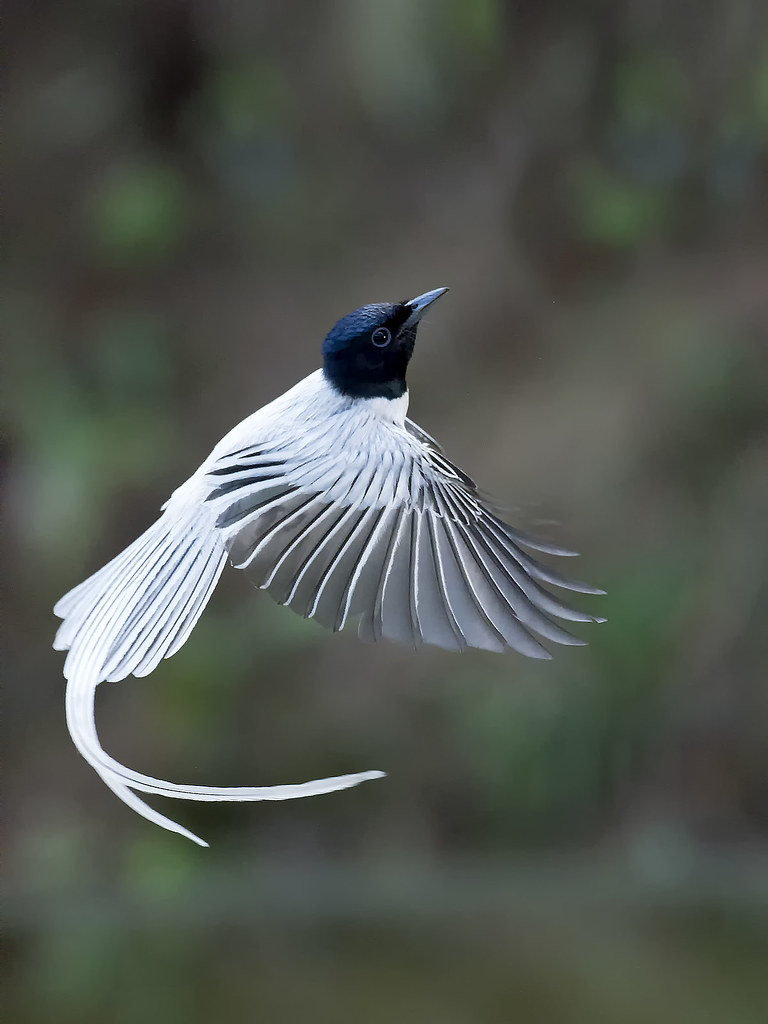
The Indian paradise-flycatcher species usually is found in deciduous, bamboo, and evergreen forests with shrubs in the ground. However, this species has a low forest dependency compared to other birds and live at high elevations. The range of these wooded habitats can reach a maximum of 9842 ft (3 km).
Due to the large habitat range of these birds, they are also found in moist montane forests, mangroves, and shrublands. The nests of these birds are usually found near streams. The artificial habitat of these birds include parks, rural gardens, and plantations.
Who Do Indian Paradise-Flycatchers Live With?
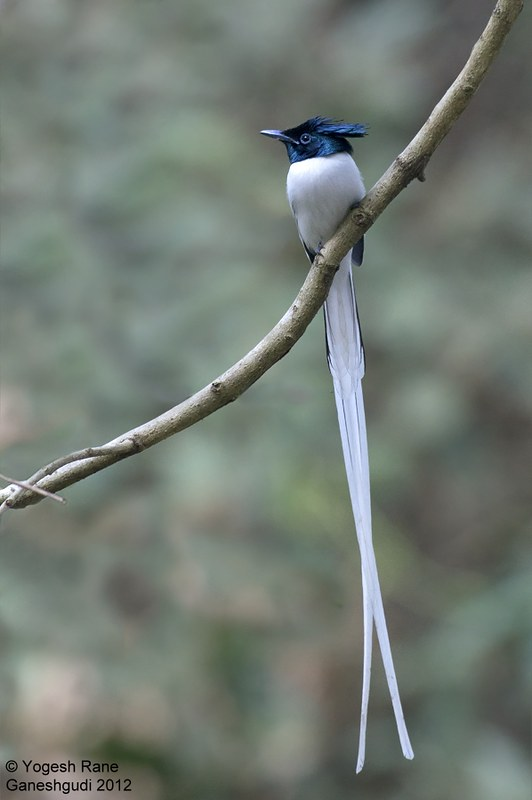
The Indian paradise-flycatcher (Terpsiphone paradisi) is usually a species of bird that is solitary in nature, and both the males and females prefer to live alone. However, unlike other species of birds, Indian paradise-flycatchers do interact with their mates or group members outside of the breeding season. As they migrate, these birds can either occur as two individuals or a group. They have to always be on the move as they depend on their movement to feed themselves as they prey on insects.
How Long Does An Indian Paradise-Flycatcher Live?
Due to a lack of data, the exact lifespan of this species of birds cannot be stated. However, other flycatchers like the least flycatcher and the vermillion flycatcher live for around five to eight years.
How Do They Reproduce?
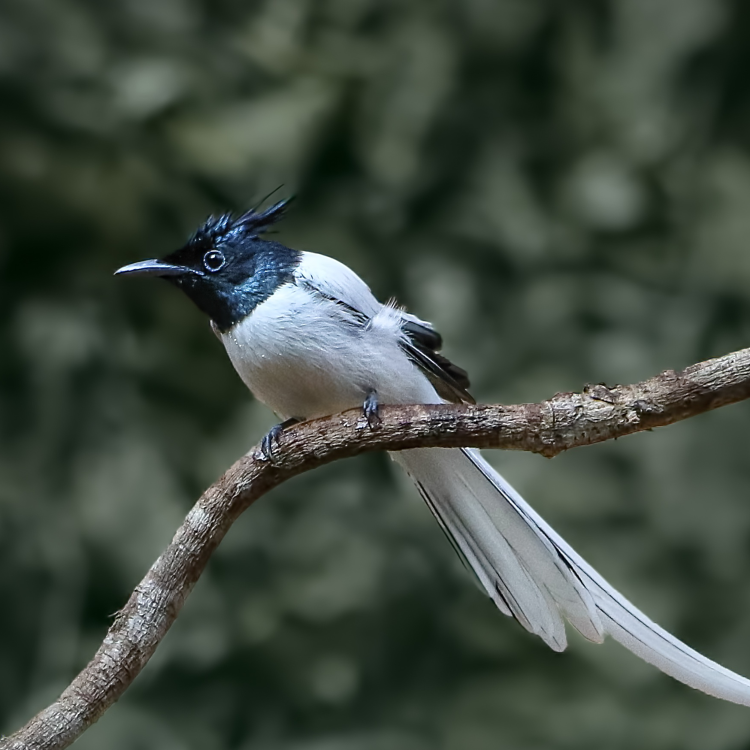
The breeding pattern of the male Indian paradise-flycatcher is quite a unique behavior in itself, as a study has shown that long-tailed males are often preferred by the females over males with a shorter tail. Long-tailed males have also been seen mating with females in breeding earlier than males with shorter tails. This study has solidified the fact that the female will prefer a male with longer central tail feathers compared to a male with shorter central tail feathers. Another result of the study was that the morphs on the male have a direct link to the success of reproduction among this species.
The breeding season of Indian paradise-flycatchers starts in March and ends in July. Mating couples spend a week creating their nest as they forage the ground for sticks, roots, and spider webs for basic material. In most cases, the nests are often created nearby the nests of drongos as their presence provides protection.
After the nest is built, the male-female mate, and after a gestation period of two to four days, the female will lay the eggs. Both the male and the female will incubate the eggs for 14-18 days before the eggs hatch.
Indian paradise flycatchers are monogamous in nature, and both the male and female parent contribute to the care of the eggs and the young nestling.
What Is Their Conservation Status?
This species of bird has been given the status of a Least Concern species on the IUCN Red List due to its large population on the continent of Asia.
Indian Paradise-Flycatcher Fun Facts
What Do Indian Paradise-Flycatchers Look Like?
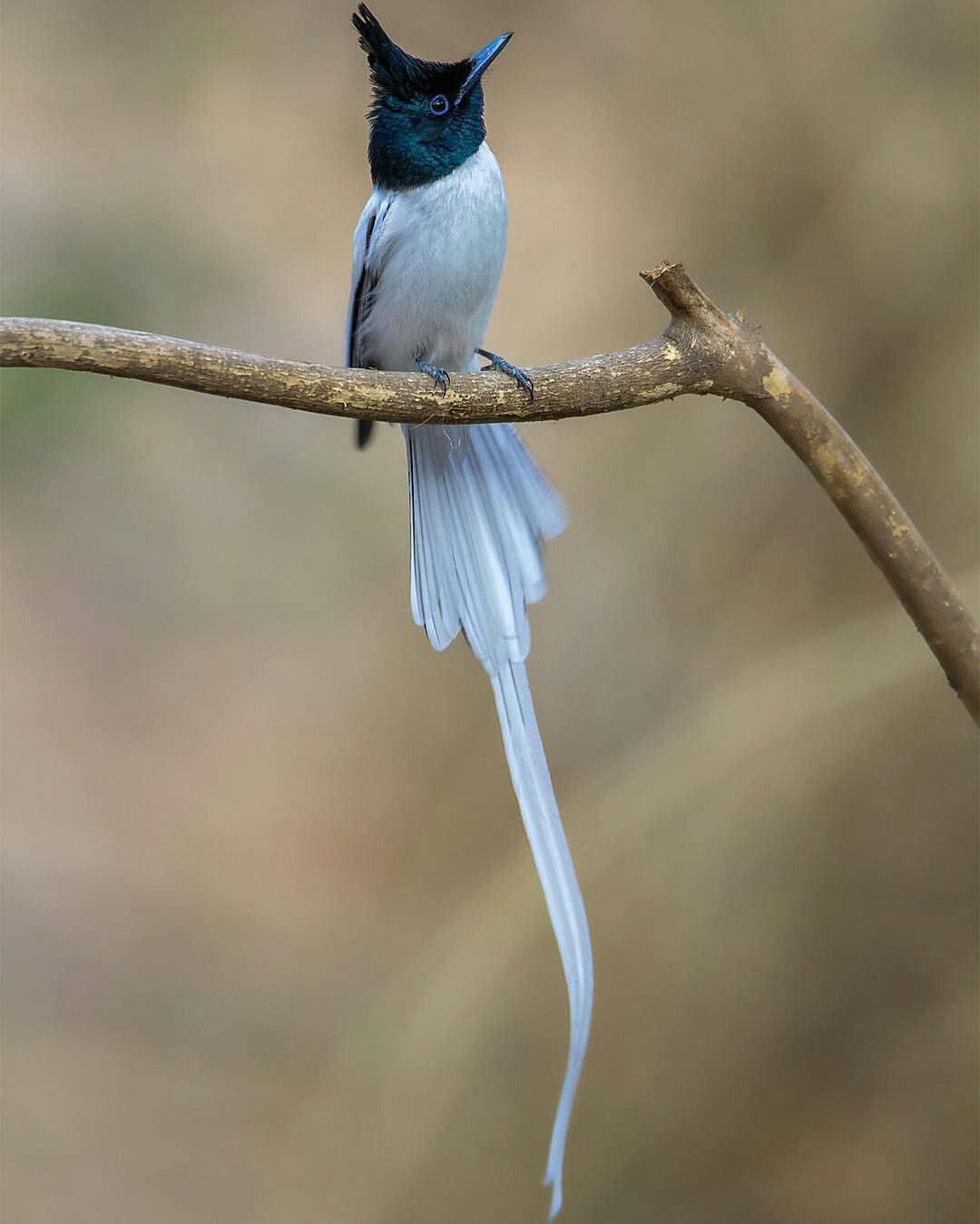
The male and female birds of this species can be easily distinguished due to the description of their features which include the body size and their plumage.
Male Indian paradise-flycatchers portray dichromatism as the males can occur in two color morphs, rufous morph and white morph. Rufous morph males have an entirely glossy black head, a very long crest, and a mantle that is rufous in color with long tails and upper wings. The white morph Indian paradise flycatcher has the same glossy black head as the rufous morph but has white plumage with black as the primary color, with bright blue eyelid, grayish-blue bill, grayish-blue mouth, and grayish-blue legs.
Females have visually similar plumage features to rufous morphs male but are duller, with a shorter crest, a gray throat, and tails without the long central feathers that end in a square.
The juveniles are similar to females but have pale centers. A young adult male has a black throat like that of a female. The Ceylonensis subspecies lack white morph, and the Leucogaster subspecies have rufous upperparts.
How Cute Are They?
These birds are absolute beautiful and are a delight in avid birdwatchers’ eyes, especially the male adult as their long tails and bright wings are beautiful to the core.
How Do They Communicate?
Indian paradise-flycatcher sounds are usually made up of songs and calls to communicate with each other vocally. This species can develop a great sense of sight, touch, and smell, especially the adult. There is not much information about the purpose of the calls and songs of these birds.
How Big Is An Indian Paradise-Flycatcher?
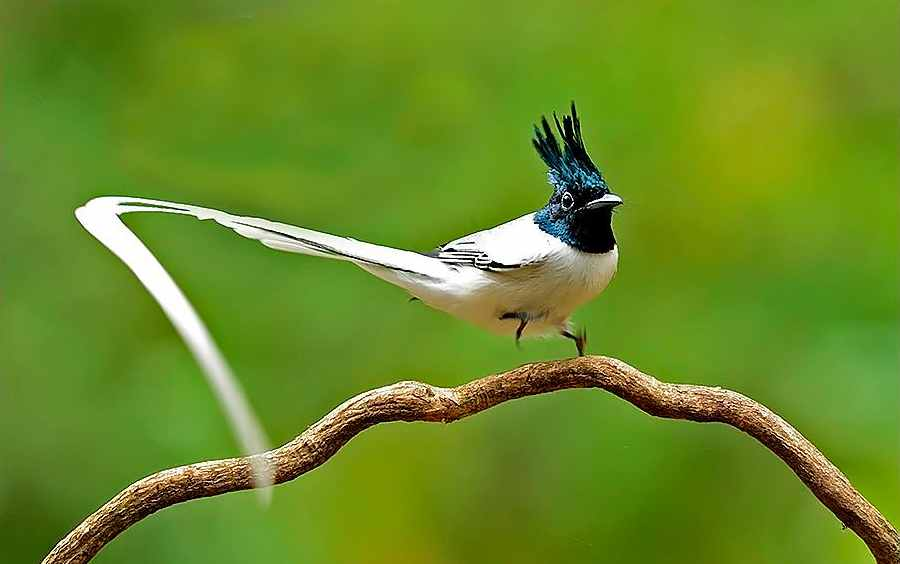
The Indian paradise-flycatcher is a medium-sized bird and grows up to 7.4-8.6 in (19-22 cm) and has a wingspan of 3.3-3.6 in (8.6-9.2 cm). In comparison, the smallest of the Monarch flycatchers, black-naped monarchs, grow only up to 6 in (15.2 cm). However, the great-crested flycatcher is similar to the Indian paradise-flycatcher in size.
How Fast Can An Indian Paradise-Flycatcher Fly?
Due to a lack of specific data, the speed at which these birds fly is not known. They can be seen foraging on the ground for food.
How Much Does An Indian Paradise-Flycatcher Weigh?
These birds are lightweight as a full-grown adult will weigh a mere 0.5-0.7 oz (16–22 g).
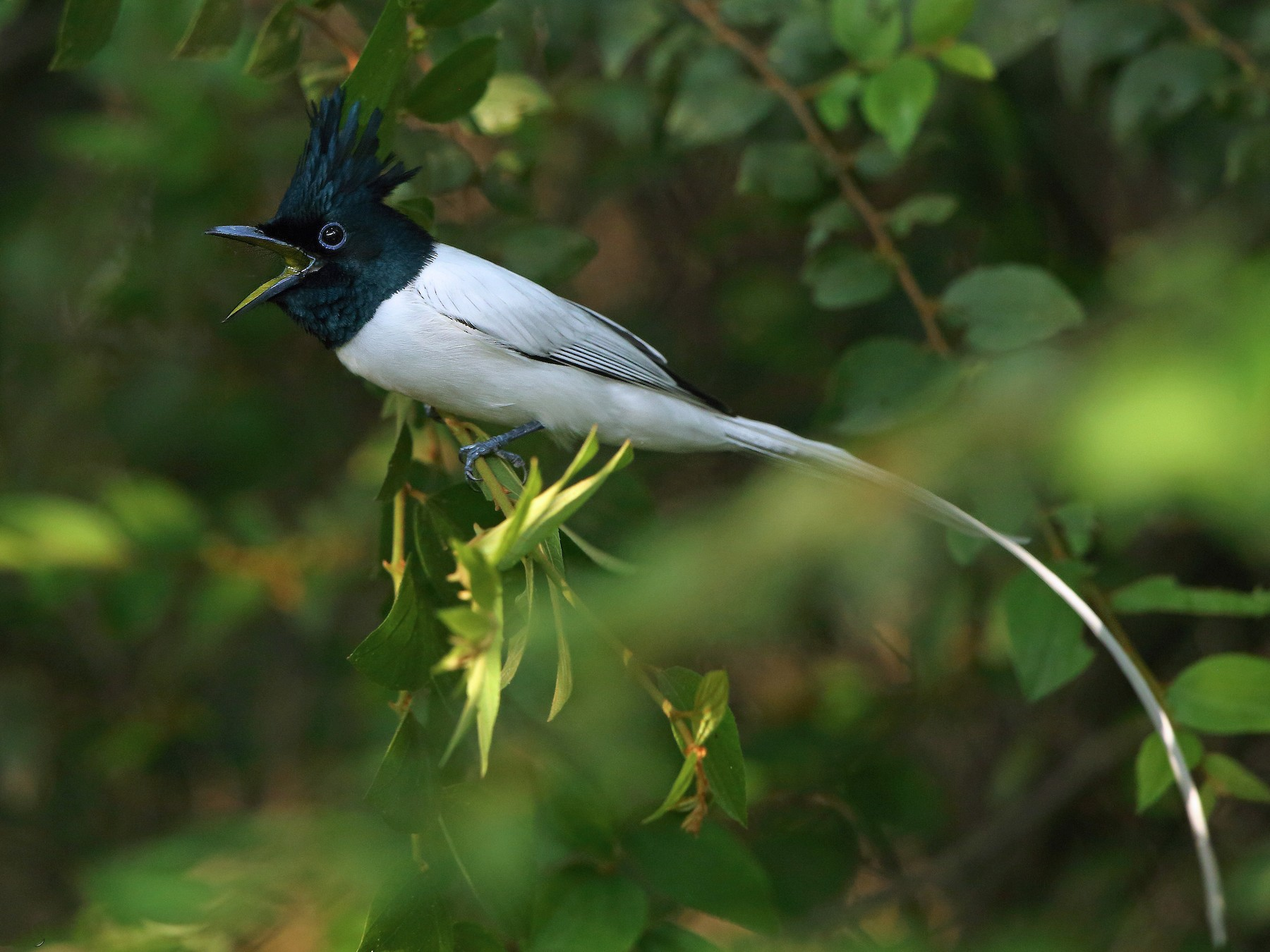
What Are The Male And Female Names Of The Species?
No particular name has been assigned to either sex of this species of birds.
What Would You Call A Baby Indian Paradise-Flycatcher?
A baby Indian paradise-flycatcher is called a chick.
What Do They Eat?
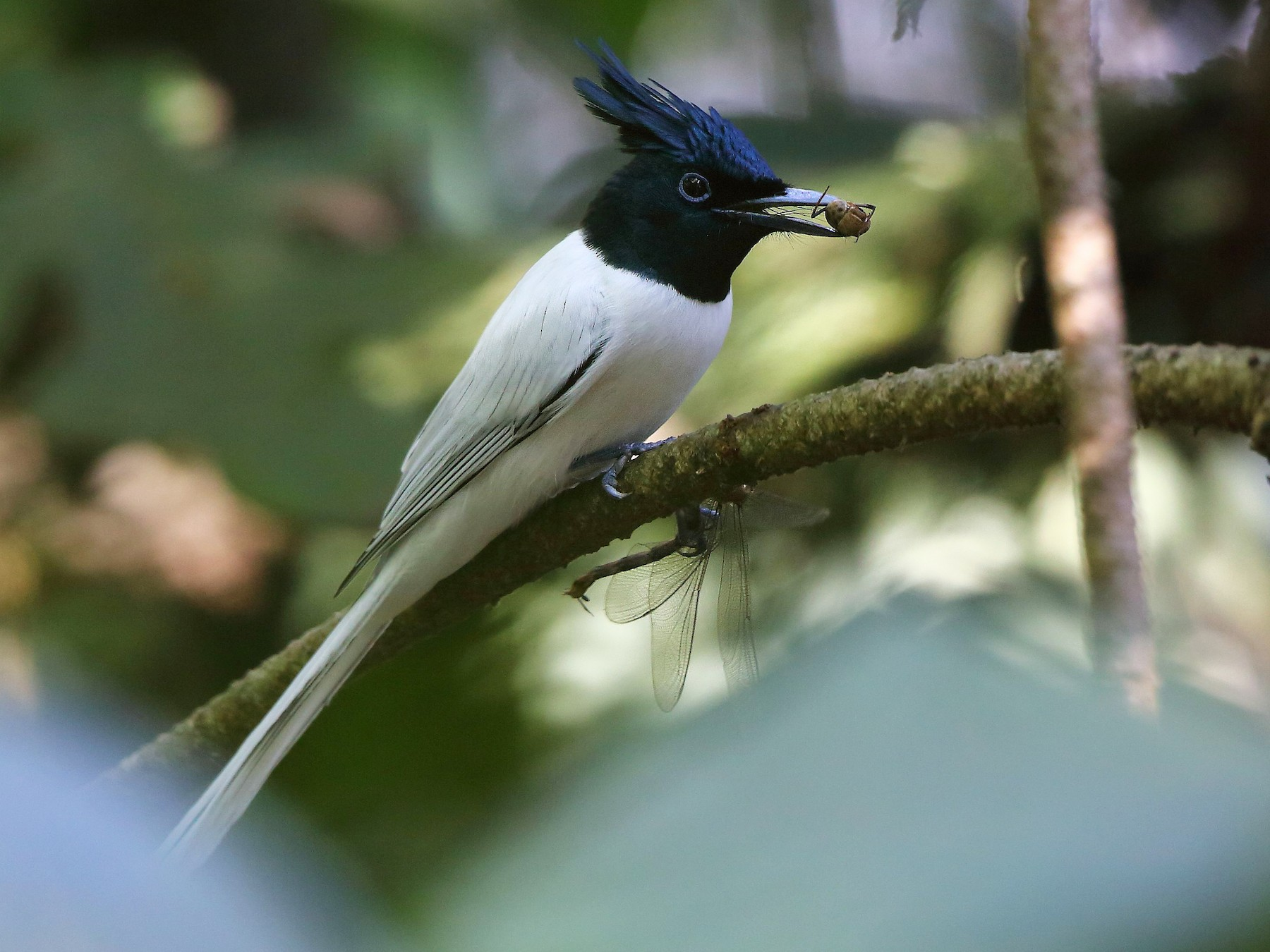
Though classified as omnivores, Indian paradise-flycatchers are insectivores as their diet consists of insects. They are also capable of feeding on insects, flying mantis, grasshoppers and butterflies.
Are They Poisonous?
No, these birds are not poisonous. Indian paradise-flycatchers show docile behavior and are not harmful to humans or other animals.
Would They Make A Good Pet?
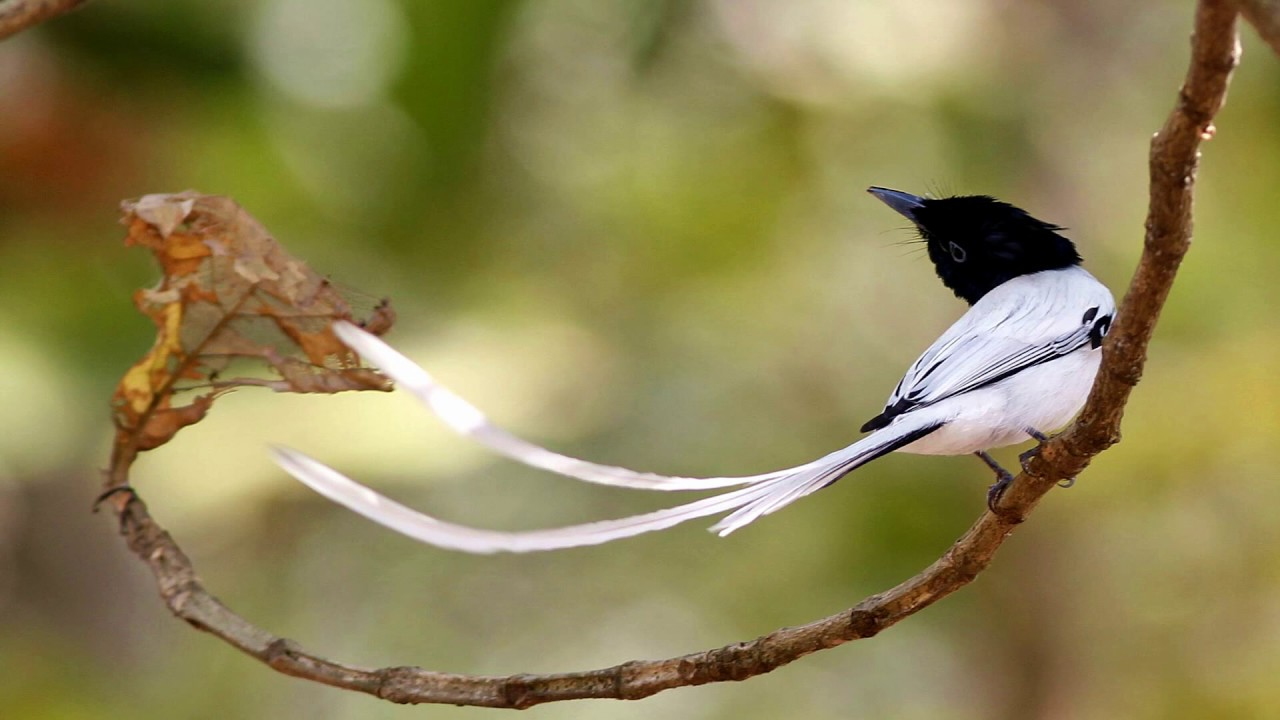
No, this bird is a wild species and should not be domesticated as they are not fit to live a caged life.
Did You Know…
Swedish botanist Carl Linnaeus termed the scientific name, Corvus paradisi, for these birds in 1758. As of today, the name Corvus paradisi is a synonym for these birds alongside their main scientific name, Terpsiphone paradisi.
The Indian paradise-flycatcher female lays pale creamy pink or reddish-brown eggs.
The Indian paradise-flycatcher, alongside the Amur paradise flycatcher and the Blyth’s paradise flycatcher, were together termed as the Asian paradise flycatcher until 2015.
Monarch flycatchers, the family the Indian paradise flycatchers belong to, can be found all across the world.
The paradise-flycatcher family has 17 species, including the Indian paradise flycatcher that can be found in Africa and Asia.
Are Indian Paradise-Flycatchers Endangered?
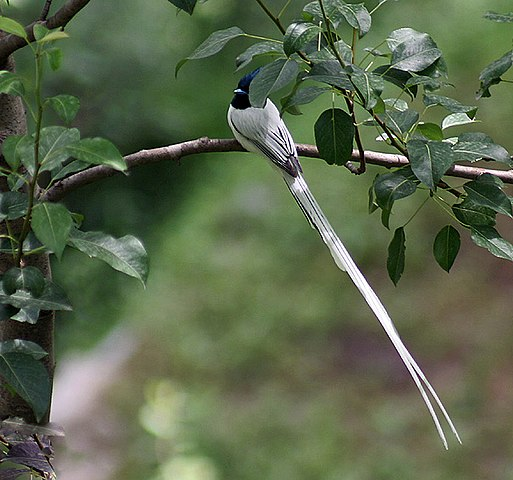
No, this bird is not endangered and comes under the description of a Least Concern species on the IUCN Red List.
How Did The Indian Paradise-Flycatchers Get Their Name?
The genus under which paradise flycatchers comes was named Terpsiphone by the German zoologist Constantin Gloger. The word ‘terpsiphone’ comes from the Greek word ‘terpsi’, which means ‘delighting in’, and ‘phonos’, which means ‘voice’.
